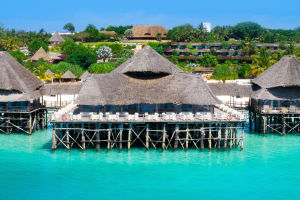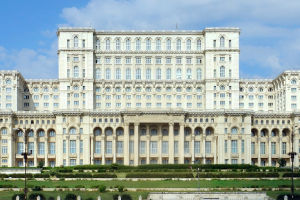Friends, picture stepping off a sunlit ferry as warm Indian Ocean breezes carry clove and cinnamon aromas through bustling Stone Town. Narrow alleys lined with carved doors beckon exploration, while crimson bougainvillaea drapes over coral walls.
From stunning beaches to rich cultural heritage, delightful wildlife experiences to vibrant markets, there is something for everyone. The following guide presents the top exceptional activities to maximize any visit to Zanzibar.
Theme
Zanzibar balances glistening beaches, spice farm breezes, and ecological havens. Designated a UNESCO World Heritage Site in 2000, Stone Town preserves centuries of Omani and European influences engraved on its stone architecture. Ministries of Antiquities insure preservation, while licensed guides illuminate the island’s blend of Swahili culture and oceanic biodiversity at every turn.
Steps
Follow this roadmap:
1. Arrive via Abeid Amani Karume Airport (ZNZ), with daily flights from Dar es Salaam ($180–$220) or Nairobi ($260 one-way).
2. Transfer by taxi ($10–$15) or prebooked hotel shuttle.
3. Reserve three nights in Stone Town for heritage immersion.
4. Explore beaches, spice farms, and wildlife reserves on days 4–7.
Transport
Taxis between Stone Town and beaches like Nungwi run $8–$12 per ride; negotiate with meter-off shuttles to secure fixed $10 fares.
Scooter rentals offer independence at $25/day, with full‑tank petrol included. Hotels frequently provide free transfers to local attractions; confirm with reception.
Inter-island ferries to Pemba cost $65 round-trip, departing daily at 8 AM and 3 PM.
Stay
Accommodation budgets range widely: budget hostels start at $25/night for dorm beds. Mid‑range hotels in Stone Town charge $120 for sea‑view rooms. Beach resorts in Matemwe or Kendwa begin at $150/night, rising to $300 for all‑inclusive packages. Book 45 days ahead during July–August to secure top-value rooms and preferred dates.
Stone Town
Wandering Stone Town’s labyrinth reveals ornate Zanzibar doors, pit-stops for locally roasted coffee ($3), and historic sites like the House of Wonders (entry $15). Guided walking tours ($30 for 2 h) introduce Old Dispensary, Memorial Cathedral, and Forodhani Gardens. Sunset rooftop showcase pink horizons over the Indian Ocean.
History
Explore the Memorial Cathedral and Chambers museum ($15 entry) to confront Zanzibar’s role in 19th-century trade. Illuminating panels and chilling underground cells create reflective space. Licensed historians narrate survivor testimonies during guided visits, ensuring respectful experience. Nearby Arabic Houses display Omani-era architecture, highlighting cross-cultural legacies preserved by UNESCO monitoring teams.
Old Fort
The Old Fort, built in 1698, now hosts artisan souks, pottery studios, and the Swahili Cultural Centre. Entry is $10, with evening dance performances free on Tuesdays and Saturdays at 7 PM. Adjacent Forodhani Gardens food stalls offer Zanzibar pizza with chicken or sugarcane juice for $2–$5 under lantern-lit skies.
Market
Darajani Market bursts to life at 6 AM with fruit vendors offering mangoes for $1, jackfruit slices for $1.50, and fresh tuna fillets at $3 per kilo. Spice stalls display cinnamon, turmeric, and nutmeg at $4 per bundle. Friendly haggling nets better deals—sampling guided by market-savvy locals ensures safe purchases.
Spice Tour
Spice farm excursions depart Stone Town at 9 AM and 2 PM for $20, including minivan transfers. On 2 h guided tours, participants pluck cloves, taste coconut oil, and learn essential-oil distillation. Complimentary cinnamon tea and fresh pineapple slices ($1) deepen cultural insight. Organic farm shops sell gift packs at $10–$25.
Beach Bliss
Nungwi and Kendwa beaches deliver powder-white sands and azure waters. Beach chair rentals cost $5/day; snorkeling gear is $7. Guided glass-bottom boat trips explore coral gardens ($30/person, 2 h) while sunset dhow cruises depart at 6 PM ($35 incl. snacks). Evening beach serve grilled lobster platters for $25.
Island Trip
Prison Island, a 20‑min boat ride ($25 return), offers a 45‑min tour among Aldabra giant tortoises (entry $16). A 4 m mangrove walkway reveals crab burrows and bird rookeries. Sip fresh coconut water sold by locals for $2. Return boats depart hourly until 5 PM; private charters available at $80.
Forest
Jozani Forest Reserve charges $15 entry plus a $10 mandatory guide fee. Over 2 h, marvel at endangered Zanzibar red colobus monkeys in canopy hideaways. The 400 m wooden boardwalk across mangroves highlights mudskipper habitats and crab tunnels. Reserve visits run from 8 AM–4 PM; arrive early to avoid midday crowds.
Reef Walk
During low tide at Paje or Bwejuu, guided reef walks ($25, 90 min) reveal starfish, crustaceans, and sea urchins. Tours start two hours before predicted low tide; wear reef shoes for $3 hire. Knowledgeable guides ensure environmental respect and share coastal folklore as waves recede, creating natural tide pools.
Dive
Mnemba Atoll diving trips cost $120 for two-tank excursions with PADI-certified instructors, gear included. Beginner dive experiences start at $100, with safety briefings, 5 m depth limits, and coral-reef orientation. Boats depart at 8 AM, returning by 1 PM. Day logs highlight parrotfish shoals, hawksbill turtles, and occasional reef sharks.
Sunset
Capstone evenings aboard traditional dhows feature sailing at 6 PM, live taarab music, and sunset drinks($8). Cruises span 90 min, covering Mangapwani coastline. Light bites—Coconut-Crusted Bhajias($3) and fruit platters ($6)—compliment the ocean breeze. Book 24 h ahead; small-group charters maintain intimacy for under $40 per head.
Conclusion
Friends, Zanzibar’s mosaic of aromas, sounds, and sights invites unforgettable journeys. Guided by precise costs, timed itineraries, and local insights, craft your own island tale—wandering spice trails, diving coral kingdoms, and dancing to Swahili rhythms. Share your adventures with fellow travelers and let Zanzibar’s magic linger long after the journey ends.


